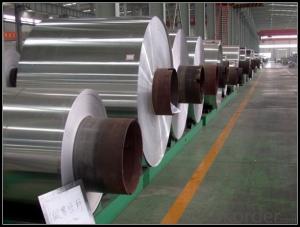Photography is an art form that captures moments in time, preserving them for eternity. It’s a way to express creativity, tell stories, and share perspectives. One of the most versatile and cost-effective tools in a photographer’s arsenal is aluminum foil. Yes, you read that right – aluminum foil! This everyday kitchen item can transform your photography in ways you never thought possible. Let’s dive into the world of aluminum foil in photography, focusing on its use as reflectors and diffusers.
The Magic of Aluminum Foil
Aluminum foil is a simple yet powerful tool that can enhance your photography skills. It’s affordable, readily available, and easy to manipulate. Whether you’re a professional photographer or a beginner, incorporating aluminum foil into your toolkit can open up a whole new realm of possibilities.
Reflectors: Bouncing Light Back
One of the primary uses of aluminum foil in photography is as a reflector. Reflectors are used to bounce light onto a subject, filling in shadows and adding depth to an image. Aluminum foil can be crumpled, folded, or shaped to create different reflector sizes and angles.
Crinkling for Soft Reflections
Crumple a piece of aluminum foil to create a soft, diffused reflection. This is perfect for portrait photography, as it helps to gently fill in shadows under the eyes, chin, and cheekbones without creating harsh highlights.
Smoothing for Direct Reflections
For a more direct and intense reflection, smooth out the foil to create a larger, more concentrated light source. This works well for product photography, where you want to highlight specific details or features.
Shaping for Creative Reflections
Get creative with the shape of your aluminum foil reflector. You can create curves, points, or other unique shapes to bounce light in interesting ways, adding artistic flair to your images.
Diffusers: Controlling Light Intensity
Aluminum foil can also be used as a diffuser to control the intensity of light. Diffusers help to spread out light, reducing harsh shadows and creating a more even, softer illumination.
DIY Aluminum Foil Diffuser
To create a simple diffuser, tape a piece of aluminum foil over your camera lens or light source. Ensure that the foil covers the entire lens or light source, and then crumple or fold the edges to create a soft, diffused effect.
Using Foil for Natural Light Diffusion
If you’re shooting outdoors and the sunlight is too harsh, use aluminum foil to create a makeshift diffuser. You can attach it to an umbrella, a hat, or even a piece of cardboard to soften the light falling on your subject.
Enhancing Your Photography with Aluminum Foil
Incorporating aluminum foil into your photography doesn’t mean you have to sacrifice quality or professionalism. In fact, it can elevate your work by adding a unique touch and solving lighting issues on the fly.
Experimenting with Colors
Don’t limit yourself to just the silver side of the foil. Try using the dull side or even colored foils to introduce different moods and tones to your images.
Reflecting Sunsets and Sunrises
Use aluminum foil to capture the warm glow of sunsets and sunrises. The reflective properties of the foil can enhance the colors and add a magical touch to your landscape photography.
Adding Texture and Depth
Aluminum foil can add texture and depth to your images by reflecting light in a controlled manner. This is particularly useful in macro photography, where small details can make a big impact.
The Art of Improvisation
Aluminum foil is a testament to the power of improvisation in photography. It shows that you don’t need expensive gear to create stunning images. With a little creativity and ingenuity, you can turn a simple household item into a powerful photography tool.
Conclusion
Aluminum foil may seem like an unlikely hero in the world of photography, but its versatility and effectiveness cannot be denied. As you continue to explore and experiment with this humble material, you’ll discover new ways to enhance your photography and create images that are both beautiful and unique. So, the next time you’re about to toss that piece of aluminum foil, think twice – it might just be the secret to your next great shot.

